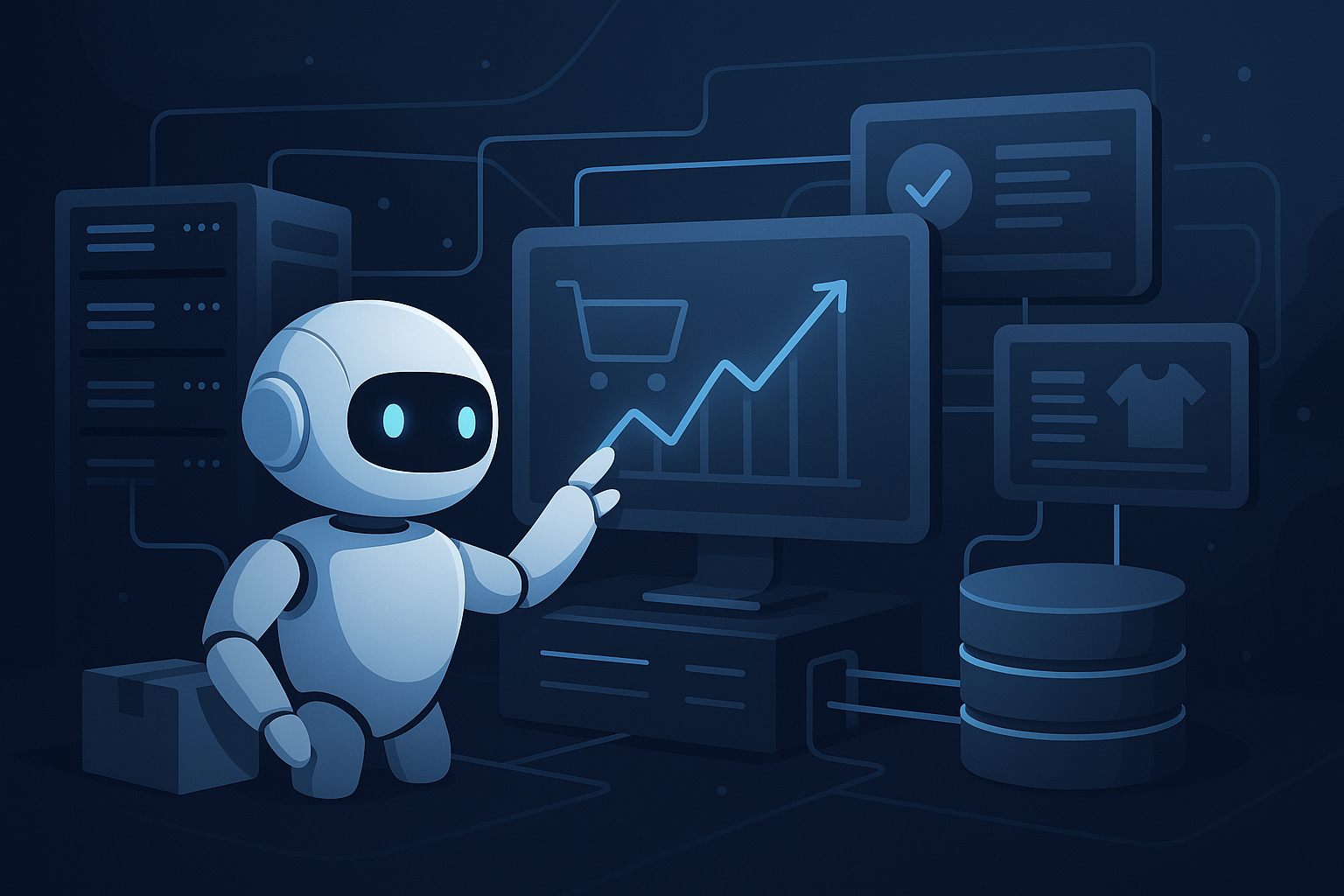Streamlining Backend Operations to Handle Traffic from Personal AI Shopping Agents
As AI shopping agents drive higher transaction volumes and faster interactions, e-commerce businesses must optimize backend operations with internal AI automation and robust system integration.

The advent of personal AI shopping agents doesn't just impact the customer-facing side of e-commerce; it also introduces new operational challenges and opportunities in the backend. Handling potentially higher volumes of faster interactions initiated by AI agents requires streamlining backend operations and leveraging internal AI automation. Businesses need to adapt their systems to efficiently process transactions and manage workflows potentially initiated by this new customer segment.
AI agent development is transforming business operations by automating tasks. For businesses interacting with personal AI shopping agents, this means preparing their backend to handle AI-driven traffic efficiently. Key operational areas affected include order processing, transaction management, and workflow automation.
Challenges related to backend operations when dealing with AI agents include:
Increased Transaction Volume and Speed:
AI agents can browse and make decisions much faster than humans. A large volume of agents interacting with a site could lead to a significant increase in transaction volume and processing speed requirements.
Potential for "Noise":
AI agents might place, cancel, or modify orders frequently as they execute strategies for their human users or encounter issues. This could create "a lot of noise" in the system, potentially straining inventory and operations.
Data Integrity and Security:
Ensuring data integrity in AI-to-AI communication is crucial. Backend systems must securely and reliably handle transactions initiated by external AI agents. Fraud detection systems designed for humans may misidentify legitimate AI agent traffic, requiring adjustments.
Integration Requirements:
Efficiently processing agent-driven transactions and managing related workflows requires seamless integration between the customer-facing platform and backend systems like ERPs, inventory management, and payment providers. Solutions exist that integrate into existing platforms to automate tasks like generating return labels or processing refunds.
Leveraging internal AI automation is key to streamlining backend operations for AI-agent traffic. Businesses can use AI to:
Automate Order Processing and Fulfillment:
AI can help process transactions initiated by AI agents more quickly and efficiently, reducing manual effort in order management and fulfillment workflows.
Manage Workflow Automation:
Internal AI systems can manage complex workflows triggered by agent activity, such as handling order modifications or cancellations initiated by an agent. AI agent development can enhance customer service and streamline business processes.
Improve Data Handling:
AI can assist in managing and integrating data from various sources, ensuring data consistency and quality needed for backend processing.
Enhance Fraud Detection:
Deploying sophisticated internal AI systems is necessary to distinguish between legitimate AI customer activity and malicious bot traffic. Legacy fraud detection systems are problematic in this context. Security systems need to be adjusted to avoid blocking legitimate AI traffic. Riskified, for example, offers fraud prevention solutions to protect accounts and transactions.
Adapting to the operational demands of personal AI shopping agents requires a focus on backend efficiency, robust data management, and the strategic deployment of internal AI automation. Successfully integrating AI solutions with existing systems is crucial for scalability and reliability.